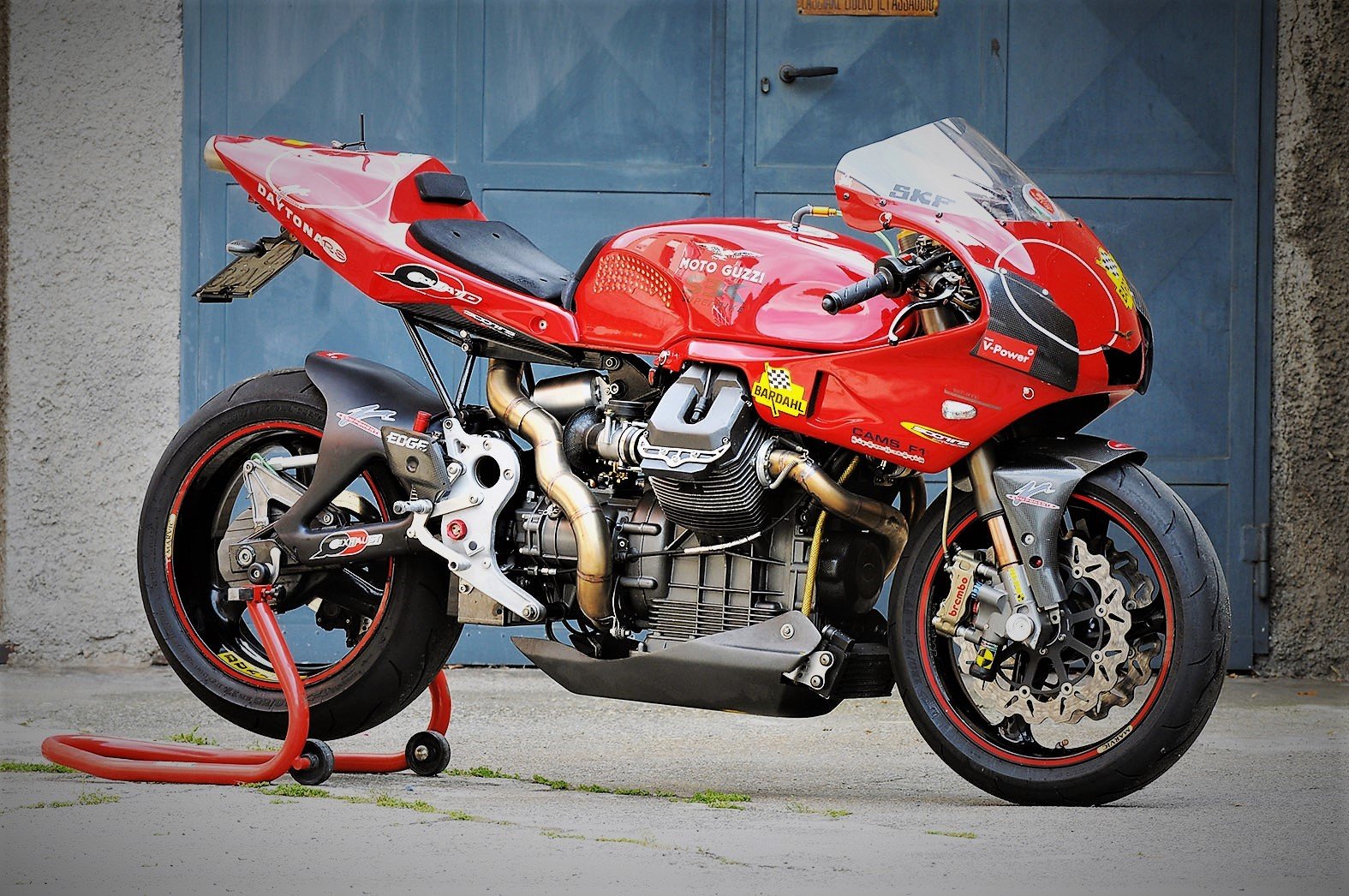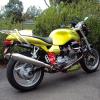-
Posts
5,230 -
Joined
-
Last visited
-
Days Won
268
Content Type
Profiles
Forums
Events
Gallery
Community Map
Everything posted by Lucky Phil
-
Why? How much fucking time do you think I have in my life. I give away what I've learned here for free, you don't like my style then block my posts. You don't value or agree with the info then just ignore it. Same for anyone here, you got a problem with the delivery then don't read my posts or PM docc and get me kicked off the board. Seriously in the grand scheme of things I really don't give a shit at the end of the day. As a matter of fact I think I'm done here.
-
Who knows docc. The theory is the smaller pistons will move farther for a given input pressure but with less force. In reality there are seal frictional considerations to take into account. From memory it's the smaller ones that usually move first. It's not really relevant in any way that I can see. You just pump them out until the pads touch then lever them back evenly until you can force the calliper back over the disk. Phil
-
Using the term "I was road racing at the advent" as some form of knowledge based technical qualification is amusing. A bit like "I'm a pilot so I know the engineering technicalities of my aeroplane". Some of the least technically knowledgeable people I've ever met are motorcycle racers and pilots. There are many detailed reasons for differential pistons sizes. Some are more obvious and of greater influence and some less so. Some are mechanical, some are thermal and others chemical. They all add up to create the reasoning behind the design. As is usual when you start drilling down into the details there is rarely a simple singular answer. Phil
-
Yes docc you have it in reverse. I actually know this stuff and I have a calliper in my hand but you and scud might want to check some Yamaha or Honda forum or something. Phil
-
So you didn't believe me Scud and went looking on a Jap bike site that "seems credible" The only assumption I can make is my explanation lacks credibility Phil
-
The small pistons are on the leading edge scud. Phil
-
In "theory" docc the leading small pistons will move first due to smaller piston size and probably less seal friction due to smaller circumference but in reality there are variables at play. When the lever is pulled there will be more pressure on the trailing area of the pad due to the greater sized pistons and this compensates for the less effective friction coefficient on the trailing area of the pad due to increased disk temp compared to the leading end of the pad and "gassing" of the forward pad friction material under heavy load which reduces the effectivity of the trailing end of the pad. It's a consequence of long banana shaped pads and callipers to some degree to fit into small radial spaces created by rim size and large brake rotors. The later 4 pad design suffers less I suppose so they go back to the even piston sizes. Phil
-
I've been banging on about how good these things are for years after Pete recommended them. If you also don't have a spare later front timing chain cover gasket of the same style then I've been wasting my time posting about them as well. Phil
-
This is a new interpretation on me Scud. Piston movement is pretty much irrelevant as the pads are only a few thousands of an inch away from the disks. When you grab the brakes the actual movement of the pistons is very small. Once the pads contact the disk it's about applied pressure over area. My understanding of the original reason for differential piston size was to provide even pad wear and pad performance. The leading end of the pad experiences quite different thermal and therefore frictional conditions to the trailing end hence the differential piston size and pressure applied to the shared pad to compensate. This later calliper design uses 4 separate pads to, I suspect mitigate the original issue. It also has a central bridge over the pad slot to increase rigidity. These were the last generation of road calliper from Brembo before the Radial style calliper took over. I've never seen a Brembo design in 50 years that was a step backwards. Anyway like the majority of upgrades they usually don't stand the scrutiny of "what's absolutely necessary". I'm channelling the "American" in me with my Guzzi in that a lot of it's about "individuality" and "nobody else having one like it" However I'm also mindful of maintaining the bikes place in "its time" so upgrades such as later USD forks with radial callipers and radial master cylinders etc are not really up for consideration. Phil
-
They are different callipers docc. Brembo p4 34/34 with 4 individual pads as opposed to the original( pictured) 30/34 callipers with 2 pads. Phil
-
Yes the brake lines need to be replaces as the orientation of the Banjo is 90 deg different. These as 34/34 pistons as opposed to the original 30/34 so about a 10% difference. The original M/C should be OK. I will also see if these will work. https://www.aliexpress.com/item/4000378552965.html phil
-
I thought it was obvious Phil
-
Try telling the spell check on this site. Both are acceptable apparently, US V British differences. Phil
-
In progress. Phil
-
No docc but the later engines that run the plug lead over the valve cover might be a tad short if you use the early cover on the later engine and then run the plug lead around the back of the cylinder like the v11 Sport. EDIT..... sorry docc I didn't see the "gasket" in your earlier post. Thought you were talking about the valve covers. All square fin 2 valve engine rocker cover gaskets are interchangeable as far as I know. Phil
-
Because the plug leads for the later valve covers come over the top of the valve cover under the black plastic cover/crash pad and the original ones come around the back of the head. Phil
-
Can't see why they wouldn't docc. You might need to lengthen the plug leads though. Phil
-
I can guarantee you they fit docc. Same as 1100 Griso valve covers fit a V11. Phil
-
The crimped stainless steel gasket with a pressure sensitive sealant coating is a leap forward in gasket sealing over the old style composite and it's variations in different materials. The "crimp" in the metal base acts like a spring to adapt to changes in the joint due to thermal expansion etc or in the case of an MLS head gasket variations in temps between say the bore bridge area and the outer circumference of the cylinder. They also adapt to the rigors of high stress engines that can sometimes suffer from "head lift" and still maintain a seal. The pressure sensitive coating function is self evident. Brilliant things and cheap to buy. A must fit to the BB front engine cover anytime you have it off.
-
It's ancient technology. These. https://www.valpolini.com/index.php/home-en/prodotto?&fID=1574 Phil
-
Back in the 80's docc I had a new GPZ900 Kawasaki. They used to run quite high engine temps, a little higher than what most people were used to. So the complaints came as did the traffic to the dealership mechanics. Kawasaki's response? They fitted a resistor to the gauge to bring the reading down a little. Complaints ceased. Phil
-
These are a sub optimal solution. The Gold standard are Valpolini metal core gaskets with integral sealer coating. Same style and principle as the late model BB front timing cover gaskets and every engine cover gaskets Ducati have used for the last 25 years. Bullet proof sealing and zero chance of squeeze failure. Phil
-
For general information to anyone reading this thread in the future this methodology is flawed and it's best to stick with the historically tried and tested oil pressure observations for troubleshooting. This LOP light on after the kill switch timing thing has way too many variables to be a troubleshooting tool. If the engine runs fine and has no unusual noises and the LOP stays off at idle in hot weather in traffic and the used oil has no concerning contamination then all is fine with the oil system. What do you do on a weekend trip or touring trip when you use this observation technique? Stop for fuel and for one of a dozen different reasons the LOP light illuminates without or with a reduced delay compared to usual observations? Pull up and start troubleshooting and have the engine apart? What would be an acceptable amount of delay? 1 second? 3 seconds? Sometimes people can go looking for issues and worries. Fitting an OPG every 30 or 40,000klms for an oil system evaluation would be reasonable but only for the oil pressure obsessed. It's the same as permanently fitted LOP gauges, a waste of time and added failure points and complexity. All you get is additional things to worry about and questions to observations you don't have the knowledge to understand. There's a good reason motorcycles in particular don't come standard with LOP gauges and only a light. It's just too cruel for the OCD riders out there. Even modern cars with LOP gauges dont use actual direct reading gauges anymore they use an indication derived and calculated from the ecu for the display and rely on a LOP switch and light for indication and warnings. If they used direct reading gauges that indicated the actual oil pressure the dealerships would be overflowing with owners with oil pressure issues. It's not just about the engineering but human psychology as well. Phil
-
OK, but the question is why would you do that? The time it takes to illuminate is of no empirical value. I don't know of anyone that monitors such things so answers might be hard to come by. Phil







